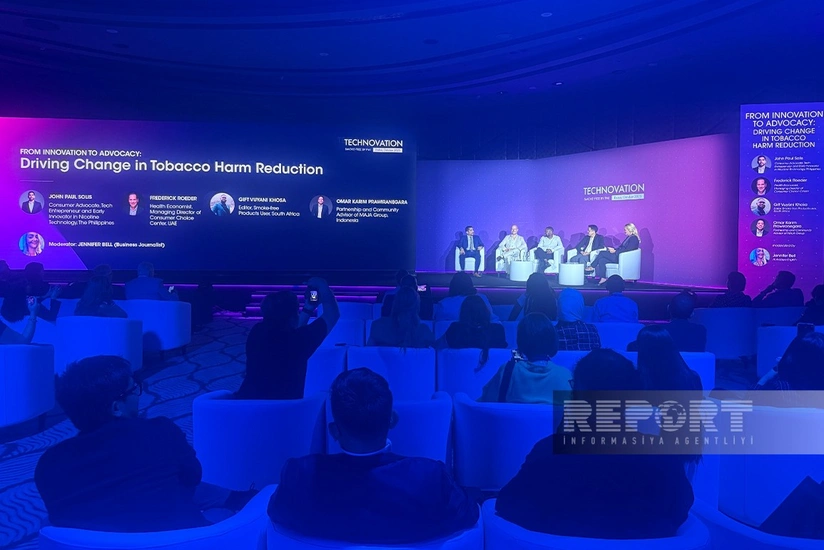Smoke-free transformation: From risk to alternative
- 22 October, 2025
- 19:11

Every year, on the third Thursday of November, the world celebrates Don't Smoke Day. This initiative was launched by the American Cancer Society in 1977 and became the first global call for conscious tobacco cessation.
Ten years later, in 1987, the World Health Organization (WHO) established another date - World No Tobacco Day, which is held annually on May 31. Both campaigns, reaching millions of people around the world, pursue one goal - to help smokers take a step towards a tobacco-free life.
States are also actively joining the fight against the harmful habit. Some strictly regulate the sale of cigarettes and prohibit smoking in public places, others increase taxes on tobacco products, while others create support programs for those who decide to quit smoking.

However, despite the efforts of national governments and international organizations, smokers still make up almost a fifth of the Earth's population. According to the WHO, the number of tobacco users in the world decreased from 1.38 billion people in 2000 to 1.25 billion in 2025. This is a noticeable decrease, but it's too early to talk about the imminent end of the "tobacco era."
Moreover, radical prohibitive measures sometimes have side effects: legal tobacco products become more expensive and less accessible, which pushes people towards smuggled and counterfeit cigarettes. This, in turn, reduces tax revenues and increases the risks of spreading serious diseases. The scale of smoking harm is difficult to overestimate - especially considering that about 80% of all smokers live in countries with developing economies, where healthcare systems often face limited resources and increased vulnerability of the population.
If you don't quit, change
When convincing humanity to give up a centuries-old habit fails, another path comes to the forefront - harm reduction. "If you don't smoke - don't start, if you smoke - quit, if you don't quit - change," - this call has become the philosophy of Philip Morris International (PMI), a world leader in consumer goods production.
How can you reduce the harm from tobacco if you can't completely give it up? At PMI, they are confident that an alternative exists and offer smokeless tobacco products as a safer choice for adult smokers. This position is based not on slogans, but on many years of scientific research involving more than 1,400 scientists, engineers, and technical specialists. The company has invested about $14 billion in the development, innovation, and commercialization of smokeless technologies, striving to find a delicate balance between healthcare and business interests.
Today, more than 99% of all PMI R&D investments are directed specifically at creating smokeless products.
Their share already exceeds 40% of the company's gross income, which indicates a large-scale transformation in the tobacco industry. According to the company, over 40 million people worldwide have already chosen PMI's smokeless solutions. The flagship of smokeless tobacco products – IQOS holds about 70% of the global heated tobacco market and has already surpassed even the legendary Marlboro in brand value. "We understand that there is no universal product that would suit everyone. Therefore, our multi-category portfolio offers adult smokers a wide range of smokeless solutions adapted to individual habits and lifestyle," noted Christos Kiritsis, Vice President of Smoke-Free Products at PMI.

No smoke without fire
Modern studies show that the level of harmful and carcinogenic substances in smokeless tobacco products is 95% lower than in cigarette smoke. This is especially important considering that more than two million people suffer from lung cancer annually, and about 85% of them are smokers of traditional cigarettes. Manufacturers believe that the number of people ready to switch to less harmful alternatives could significantly increase if governments and regulatory bodies support such solutions. For example, according to the Japanese Ministry of Health, Labor and Welfare, after the appearance of smokeless tobacco products on the market, the prevalence of smoking in the country decreased by almost 50%.
In Sweden, where such products are also widely available, the proportion of smokers has dropped to 5% of the population. The Swedish experience also inspired New Zealand, where authorities have focused on promoting smokeless alternatives. The result was not long in coming: by 2024, less than 7% of the country's adult residents were using traditional cigarettes, and by 2030, New Zealand intends to become completely "smokeless."
A similar approach is applied in the United Kingdom, where the government not only regulates the market but also actively informs citizens about the risks and benefits of nicotine-containing products, encouraging those who are not yet ready to completely quit smoking to switch to them. In countries where smokeless products are prohibited - including Türkiye, India, Vietnam, and Thailand - the level of traditional cigarette consumption remains stable or decreases insignificantly. However, the skepticism with which smokeless alternatives to smoking are still perceived is understandable. Any technological innovation once met with doubt - whether it was the first telephone, car, or airplane. Today, the same is happening with heated tobacco.
At Philip Morris International, they are confident: time works for innovation. And in the foreseeable future, smokeless products will replace traditional cigarettes in the market. According to the company's forecasts, by 2030, two-thirds of its revenues will come from this segment.
